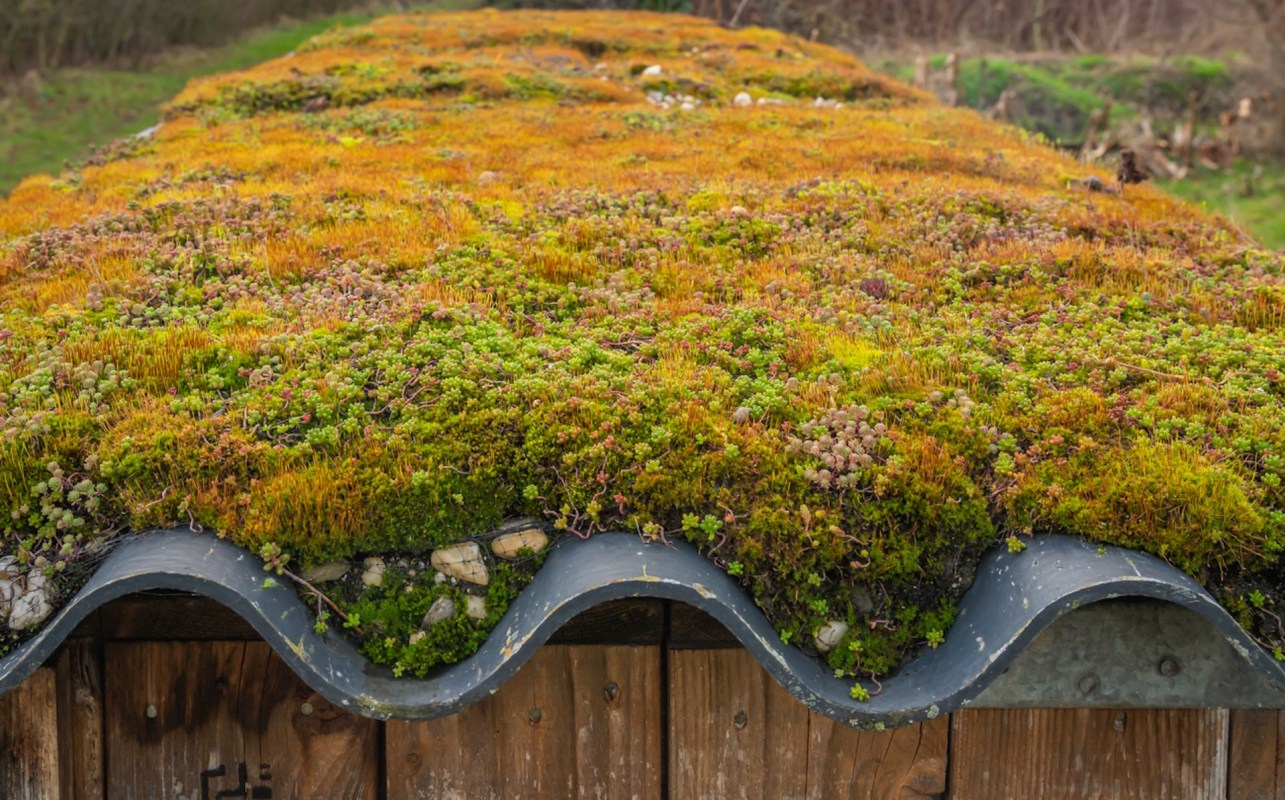Some may covet a neighbor's lawn, deck, or fresh coat of paint, but a D.C. couple has created a surprising home feature that leaves many green with envy and others confused: a green roof.
As reported by The Washington Post, architects Mark and Lucia Freeman try to incorporate eco-friendly features into their home whenever possible, so when they needed a new roof, they went green, quite literally, by installing a lush green roof.
Green roofs have been around for thousands of years and used by many ancient cultures, like the Hanging Gardens of Babylon, but they remain relatively rare. However, as global temperatures rise and the effects are seen more and more, these roofs may also become more common as they offer multiple benefits for the homeowner and the environment.
While installing the roof is more expensive and intensive than traditional options — installation requires alternating layers of waterproofing and water-retention membranes, filtration sheets, and drainage materials that are then topped with substrate and plants — the payoff is worth it.
Planting native plants — plants that evolved in and are adapted to the local environment — reduces the need for heavy watering or pesticide use. Further, they provide small oases for migrating birds and pollinators — who we rely on to keep our food production system thriving.
Further, the Post reports that data from a study conducted by the Environmental Protection Agency shows that "green roofs are capable of removing 50% of the annual rainfall volume" that lands on them — one of the main reasons the Freemans chose to install one.
During heavy rains, the Freemans found themselves with water flooding the alleys surrounding their property and a leaking roof and decided, while other stormwater mitigation practices like a rain garden may have helped in some ways, they needed something that would stem the water pouring off their roof.
The insulation from the substrate and plants also allows green roofs to make the homes they sit atop more energy efficient — creating a reduction between 15% and 25% in summertime energy costs for a typical two- to three-story building, according to the American Society of Landscape Architects.
When implemented on larger buildings — as evidenced by New York City's Javits Center for one — green roofs can also help reduce the heat island effect in cities.
Lucia Freeman told the Post that, even on a warm day, their green roof was markedly cooler than those covered in asphalt or metal, stating, "It was cool enough for me to leave my phone and my water out on the roof."
While not everyone can install a green roof, there are many ways to change how we plant and take care of our yards to help save money and the environment.
Join our free newsletter for easy tips to save more, waste less, and help yourself while helping the planet.









